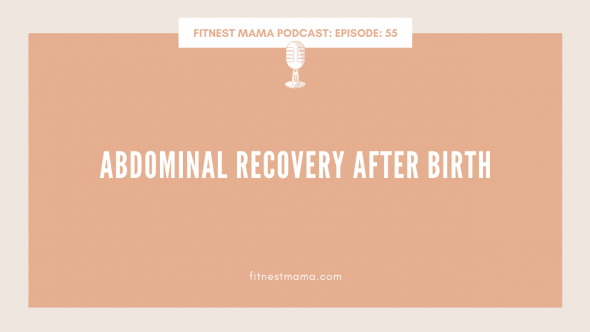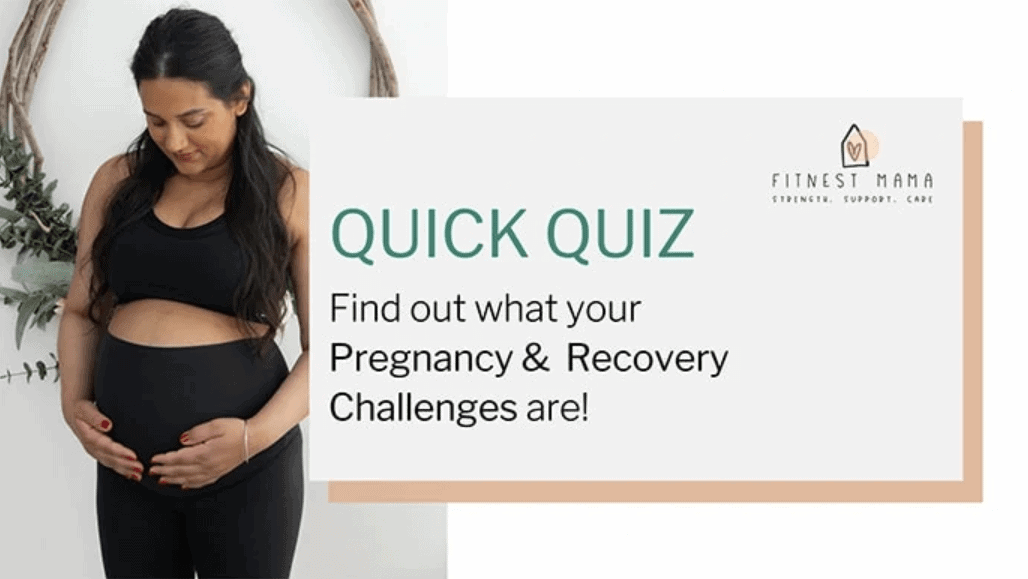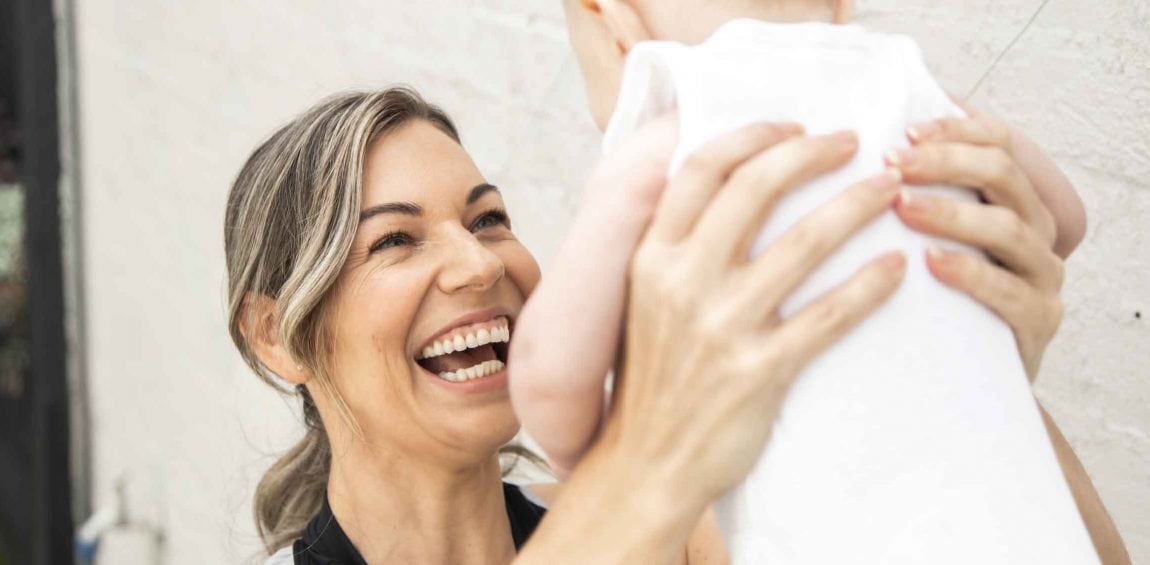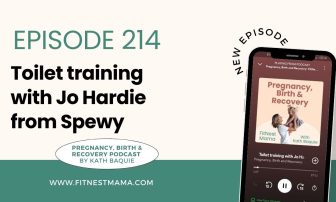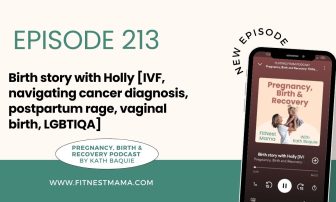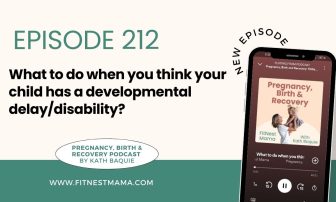Please note that this transcription was completed with computer voice recognition software. Quite often unanticipated grammatical, syntax, homophones, and other interpretive errors are inadvertently transcribed by the computer software. Please disregard these errors. Please excuse any errors that have escaped final proofreading.
If you are pregnant or you’ve recently had a baby, this podcast is for you. I am your host Kath Baquie. A physiotherapist working in women’s health and mum of three. Join me each week as we dive into all things pregnancy care, childbirth, and postnatal recovery, helping you have a wonderful pregnancy and afterbirth experience. And don’t forget to hit subscribe so you don’t miss any episodes.
Hello there! It is great to have you tuning in for another episode of the FitNest Mama Podcast. In this solo episode, I’m chatting all about abdominal recovery after birth. I’m going to discuss abdominal muscle separation, how to help manage it, and I’m going to talk you through a few important steps to help you build up your abdominal strength after birth, whether or not you’ve had a vaginal or cesarean birth.
If we haven’t met before. My name is Katherine Baquie. I’m a mum of three young girls, a physiotherapist for women and I have an online community, FitNest Mama, which helps to provide pregnant and new mothers with exercises support and resources they need to feel good from the inside, out as they prepare for and recover from childbirth. FitNest Mama has Pilates and yoga workouts that are tired-mum friendly, achy-mum friendly and toddler friendly that you can do in the convenience of your home at the end of our long day, whilst you Baba sleeps or whilst your toddler is running around causing havoc.
Before we dive in. I do want to let you know about the next live postnatal workshop which is back by popular demand and it is happening soon. So if you are listening to this episode when it drops, and if you’ve had a baby, then be sure to click the link in the show notes, that’s www.fitnestmama.com/postnatalworkshop and sign up to this free Postnatal Workshop. The goal is to totally help you confidently get back into fitness after birth. So this free workshop is for you if you’d like to discover the steps to help you safely return to fitness after childbirth. To help you learn what to do about your pelvic floor and core and the steps you need to take. Plus, you’ll learn how to boost your after birth recovery with simple but effective strategies. Head to www.fitnestmama.com/postnatalworkshop.
Alright. Let’s dive into all things abdominal recovery after birth.
So during pregnancy, our abdominal muscles go through so much change. There’s definitely a lot of stretching that occurs. And it doesn’t matter how fit and active you were before you became pregnant, helping your abdominals recover after birth is something that all women need and deserve. Our bodies change so much during pregnancy. And childbirth doesn’t matter if you’ve had a vaginal birth or a cesarean birth. So paying attention to abdominals can not only help the aesthetics and how it looks, which is what I get asked a lot. But perhaps more importantly, it’s helping you feel strong again, helping them to function well to help reduce your chance of back pain to help you be able to lift up your baby and your toddler as they grow older. So this is why I want to chat to you about abdominal recovery after birth. It’s not just about getting a six pack back, let’s face it, who had a six pack to start off with. It’s about getting that function and strength and feeling good from the inside out.
So let’s just start from the start. What is abdominal separation? Abdominal separation is something that all women do have by the end of their pregnancy. It’s when the ligament becomes stretched during pregnancy to make way for the growing baby. And we can’t really avoid that. So there are some reasons why some women might have a larger abdominal muscle separation and another woman and there’s a few different factors. So let’s go through them first. There’s factors that you have absolutely no control over. So your genetics hormones, whether or not you’ve got twins or triplets, you’re obviously going to have a larger stretch, then if you don’t. So the factors that are thought to perhaps help the reduction of the dullness of separation, but to be honest, the evidence is very shady. Things that we perhaps do have more control over is preventing things like constipation because when we’re straining on the toilet, this is putting a lot more pressure through that weakened abdominal area. Wearing abdominal support might be helpful and I know personally it felt good and it felt supportive even if it didn’t actually make a difference to the size. So there are a lot of abdominal supports out there and I have done a whole podcast episode on it. So scroll back a little bit more, where I discussed the pros and cons of all the different ranges of abdominal supports.
So other things we want to be aware of during pregnancy to help care for this abdominal area is, I guess, if you become familiar with what’s happening in your abdominal area, that’s a really good first start. So if you can observe that area, when you pick up your baby or pick up your toddler, or pick up a load of laundry, or some shopping, have a look what’s happening and see if you notice what I call the peeking or Tobler one effect where that dooming is happening. And that’s probably an indication that you’ve got some abdominal muscle separation, and it’s nothing to worry about. Like as I said, all women do have this, but I really do believe if we’re aware of it, then we might be able to help manage it and look after our body whilst this area is weakened.
So if you are noticing you’ve got abdominal muscle separation, trying to do a log roll to get out of bed might be helpful that we’ve talked about reducing the constipation. If you have a cough, go and have a chat to your doctor to try to get onto that as much as possible, and the abdominal support and I’m sure I’ve missed one out, that will come to me. So if you’ve noticed abdominal muscle separation in combination with persistent back pain or abdominal pain, then please do got to get it checked out. We’re wanting to try to avoid that bulging a large amount of bulging through that midline. And if you’ve also had incontinence or pelvic health concerns, or leaking when you cough, sneeze or laugh, or prolapse symptoms, like vaginal bulge or lump, then do go and get it checked out by your pelvic floor physio.
So let’s say manage your abdominal muscle separation as best possible during pregnancy, you’ve been doing some beautiful, gentle core exercises, being staying as fit and strong as possible. You have your baby, what can you do in those first six weeks to help with your abdominal recovery. So this is for everyone, whether or not you’ve had a vaginal birth or a cesarean birth, these are things I did as well, to really help. I remember during my first pregnancy, I had a good 10 centimeter separation. And it’s not all about size. So I just cringed at myself for the fact that I even said that because it’s not just about the width. There’s a lot of other factors at play. But what I was trying to say was I did have quite a large one. And it’s not saying that it’s going to hang around forever. And as I said before, there’s so much at play here like genetics and hormones, and so many other factors.
So let’s talk about those steps for abdominal recovery. And those first six weeks. This is where again, you’re going to hear me say this a lot bit of managing and constipation is super important. And this is a challenge in those early days, because you might be on pain relief medications, your hormones are also all over the shop and the hospital diet might be different to your normal diet, you might be a bit dehydrated from breastfeeding. So all these reasons do make us more at risk of constipation in those early days postpartum. So as soon as you notice any concerns seek help if you need to.
The second one is trying to avoid lifting anything heavier than your newborn for the first six weeks. And again, that area, that abdominal area, that ligament it’s all under been under a lot of tension and stretch. And if we think about that area, like an elastic band, we want that natural recall to occur as much as possible. So I did find it’s really challenging, especially when I had a toddler and a newborn. And it’s something that it’s great to brainstorm with your partner if got one and if they’re at home and trying to work out perhaps even when you’re pregnant and brainstorm some ways to help reduce the amount that you have having to lift up your toddler. And I know there’s always going to be circumstances where perhaps he might have to, but if we can limit them as much as possible, especially if you’ve had a cesarean, then that is amazing tubigrip. I love tubigrip in those early days postpartum. There’s also the shorts. There’s pros and cons, both. The tubigroups easy to put on, it’s quite cheap In comparison, pop it on in the morning, and then you can take that off at night-time. It’s usually really well tolerated it feels really comfortable. The benefits of the short is that they’ve got the perineal support so that pelvic floor support that I personally found they were quite challenging to put on and off. Especially in that first week postpartum when there’s lots of pad changes and that sort of thing. So it does come down to a bit of an individual choice. The shorts, you might not be able to put on until that day, five days, six for cesarean birth. Like we don’t want to causing any discomfort whatsoever. If you’re unsure, please do check with your doctor as well.
Okay, and then other amazing tip is to do that log roll to get out of bed. So what I mean by that is rolling onto your side, rather than doing a sit up to get out of bed, which can only advertently put that area under a bit more pressure, just while everything’s healing, and we want that natural recoil to occur, or rolling onto your side first and using your arms to push up. So I didn’t do any ab exercises in those first six weeks postpartum. This is a stage where the best thing for your recovery is rest. We have got the rest the rest of our lives to get fit again and strong again after having a baby. And those first six weeks are just such a beautiful stage to let that natural recovery occur. Because if we… either be the strongest person in the world, but if everything stretched like a rubber band, and it’s not just muscles we’re talking about, it’s the ligaments and the connective tissue. Really, we just need time and rest to help best heal that. So this is an instance where exercising isn’t necessarily going to help. And I really do feel like I did this personally, I felt great in the first, I think it was two weeks postpartum with my first baby, I felt amazing. And I had a friend asked me out for coffee. So I decided to walk to the cafe, it was only a 20 or 30-minute walk away, which for me, I felt great, I felt this is easy, I can do this. So I went for that 20 to 30-minute walk, sat down for a good hour or so at the cafe, then I walked home for 20 to 30 minutes and I stopped off at the local IGA just bought some bread and milk, nothing crazy. And by the time I got home, it was maybe three or four hours later. And I’d been up against gravity for that whole time. And I had no symptoms of pelvic floor issues prior. But just suddenly, on my spinal five minutes, I suddenly felt like I had a ton of bricks sitting on top of my pelvic floor. A real pelvic heaviness, sensation and a pelvic dragging sensation. And that is a symptom of pelvic organ prolapse. And for me, like there was no warning signs, I felt great. And then suddenly I did too much and I no longer felt great. And I think that’s I hear that commonly with my members and clients too. And whether or not it’s going for a walk, or perhaps starting running, often we do feel great, and there’s no gray area or there’s no warning signs, and then suddenly, you’re not feeling so great. So that’s why I’m a huge believer of less is more especially these first six to 12 weeks postpartum and beyond even. So my recommendation once you have a baby is build up five minutes incrementally with the walking. So five minutes in the first week, and 10 minutes in the second week postpartum, 15 minutes in the third week. So I went in the second week from doing perhaps 5-10 minutes of walking to suddenly doing an hour and even that because it was 20 to 30 minutes to the cafe and then 20 to 30 minutes back again, plus the seating. So that was a huge that was just too big a jump and I hear this a lot with clients and members too when they say “Whoops, I did a bit too much yesterday and now I’ve got maybe it’s prelaps signs or achy or I’m feeling exhausted.”, but I just think this first six weeks, it’s amazing to rest build up your walking really gradually and slowly. Even if you feel amazing, you know, pull yourself back if you can, because I think less is best. So then from six to 12 weeks onwards, that would be when you might get your medical clearance or hopefully you get your medical ticket for approval on your six-week postnatal check, and they let you know that it’s okay for you to get back into exercise and that’s when some gentle core work can begin.
So in the podcast, I always find these episodes a bit tricky because I would love to demonstrate some exercises like it’s not just a matter of doing one or two exercises, it’s a matter of building it into your day to day life. And I feel this part of the postnatal rehab phase is something that perhaps footy players do so well and sports injuries. Sports rehab is amazing. If you’ve had a sports injury or surgery on your knee, generally there’s a really well regarded protocol for rehab. Whereas after having a baby we tend to go from this period of rest in those first six weeks, to just dabbling with a little bit of walking or you know a couple of exercises here or there and then bang at six months postpartum. You might have had a good night’s sleep, you might be feeling great, and then you really get to get back into running or you hit class. As your CrossFit or F45, or whatever it is, and that’s where I find the issues start is because we haven’t built up incrementally and systematically as well. like walking is an amazing exercise. I think it’s so brilliant, it’s free, it gets you out and the fresh air releases endorphins. It’s great for socializing. It’s great for mental health, so many things, but it doesn’t work your pelvic floor and core. So I do think as part of anyone’s postnatal rehab, we do need to include core exercises and general strength work and pelvic floor and gradually building it up. so that by the time you want to get back into running, you feel like you’ve got a really good baseline of strength. And let’s say you don’t even want to get back into running. I know there’s probably a lot of you listening today that running is not on the agenda whatsoever. And that’s fine. Like that’s great. But being able to run with your kids at the park, you know, without risk of like feeling weak, or saw or leaky, when you run with the kids and play chase or to be able to jump on the trampoline. I think these are the reasons why postnatal rehab is really important. That confidence, feeling good about yourself, feeling like you’re getting stronger, because if you go on to have more children, future pregnancies, or we’re all going to get older and go through menopause, this is where I really do think creating a bit of a buffer, and building on our abdominal strength and core strength. And whole body strength is super important. Because as I said at the start of the episode, everything’s stretched a whole lot.
So to summarize, there’s absolutely no rush in postpartum to recover. It happens. And these early days, I feel less is more, but I also feel consistency is part of it. So if you’re listening to this thinking, am I ready to take it to the next level, I want to get back into running or I want to get back into heat or CrossFit. I guess the things for you to consider is have you been consistent with the baseline strength? Have you been exercising consistently? How do you feel like you’re getting stronger? Have you got any leaking or incontinence prolapse signs? Do you have any aches and pains? If you can answer all those questions and you’re like, yep, I’m ready to get to that next stage. That’s brilliant. That’s what we consider our postnatal rehab. This will be different for everyone depending on what your goals are. So for some of you, post that a rehab might include a few walks every week, plus a few additional home base exercises to get yourself a bit stronger. Whereas others that want to get into marathon training or CrossFit will need to take that postnatal rehab up a notch or two. So if you feel like you would like some help with your abdominal recovery, then I invite you to come and join us inside FitNest Mama, or come and join the free postnatal workshop that I talked about at the start.
So that’s it ladies. Before I sign off, remember my team and I will be putting together the Show Notes for this episode with all the links including how to join our free postnatal workshops. I’ll be there to answer any of your questions and support you during that workshop. Have a fabulous day everyone and I look forward to you joining me either for the workshop next week or next week for another episode of the FitNest Mama Podcast.
Thanks for listening to the FitNest Mama Podcast brought to you by the FitNest Mama Freebies found at www.fitnestmama.com/free. So please take a few seconds to leave a review, subscribe, so you don’t miss an episode. And be sure to take a screenshot of this podcast, upload it to your social media and tag me, @fitnestmama, so I can give you a shout out too. Until next time! Remember, an active pregnancy, confident childbirth, and strong postnatal recovery is something that you deserve. Remember, our disclaimer, materials and contents in this podcast are intended as general information only and shouldn’t substitute any medical advice, diagnosis or treatment. I’ll see you soon!
